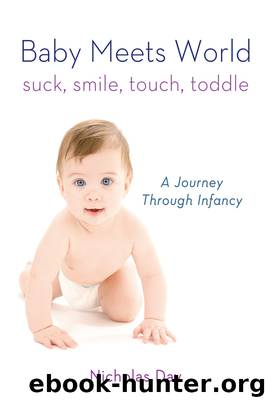Baby Meets World by Nicholas Day

Author:Nicholas Day
Language: eng
Format: epub
Publisher: St. Martin’s Press
12
A Blessed Break from Emotion and a Sudden Detour into Physiology, Carnival Midways, and Kangaroos
We tend to think of organs as discrete and internal: the kidneys, the gallbladder. But the skin is an organ, too—it is the Epic Western of the genre. Flayed, an adult’s skin would weigh in around nine pounds, depending on the specimen. It would stretch over eighteen square feet. It is huge; it is bewilderingly complex; and it is implicated in almost everything we do. “If you think about it,” the writer Diane Ackerman says, “no other part of us makes contact with something not us but the skin.” And yet, despite this Zelig-like omnipresence, skin is the organ we are least likely to notice—except when there’s something wrong.
With premature infants, it is often very clear that something is wrong.
Mature skin relies on the stratum corneum, the top of the top of the epidermis, a film as thin as twenty micrometers, or twenty-millionths of a meter. Within those micrometers are as many as twenty separate layers, which form the first and best barrier against toxins, bacteria, and viruses. They perform myriad essential functions, like the regulation of heat and water loss.
But the stratum corneum only develops during the third trimester, which means that infants born at the limit of viability, today around twenty-four weeks, may have none at all. Infants born around thirty weeks have a gossamer coat of it. Premature infants sometimes look as if they are on fire because their blood vessels are almost at the surface, turning their skin a shimmering, angry red that screams pain. The skin is so thin that a few bits of tape can do excruciating damage, a major problem since premature infants have innumerable medical monitors affixed to their bodies.
The stratum corneum is meant to be somewhat permeable. It stands guard over what goes in and out of the body. But in premature infants, the layer is not yet up to the job. It lets out too much heat and water; it lets in toxins. The most fragile premature infants sometimes lose fifteen times more water through their skin than full-term infants do. With water goes weight: in worst-case scenarios, 30 percent of total body weight can be lost in the span of a single day.
The regulation of temperature and fluids is vital: almost nothing is possible without it. But the age of viability is now so early that the skin of seriously premature babies is challenged by even these basic functions. It is strange to think that the immaturity of skin could be a major barrier to survival: it seems like there must be something much bigger and more complicated that goes wrong first—some other organ. Premature medical care has made staggering advances—surgery on congenital heart defects, for starters—only to run up against the bare fact of skin.
It would not seem especially likely, in short, that touch would be a salve to babies born prematurely. Almost no one thought it likely. But the benefits of touching turn
Download
This site does not store any files on its server. We only index and link to content provided by other sites. Please contact the content providers to delete copyright contents if any and email us, we'll remove relevant links or contents immediately.
The Lost Art of Listening by Michael P. Nichols(7360)
Rich Dad Poor Dad by Robert T. Kiyosaki(6319)
We Need to Talk by Celeste Headlee(5499)
I Love You But I Don't Trust You by Mira Kirshenbaum(3777)
The Complete Idiot's Guide to Coping With Difficult People by Arlene Uhl(3095)
Rich Dad Poor Dad: What The Rich Teach Their Kids About Money - That The Poor And Middle Class Do Not! by Robert T. Kiyosaki(2878)
The Book You Wish Your Parents Had Read (and Your Children Will Be Glad That You Did) by Philippa Perry(2419)
A Burst of Light by Audre Lorde(2406)
Life Hacks by Dan Marshall(2395)
Dealing with People You Can't Stand by Dr. Rick Brinkman(2304)
An Odyssey by Daniel Mendelsohn(2242)
The Expectant Father by Armin A. Brott & Jennifer Ash(2194)
Teach Your Child How to Think by Edward De Bono(2112)
No Time to Say Goodbye(2024)
The Out-of-Sync Child by Carol Stock Kranowitz(2007)
What I Need by J. Daniels(1998)
The 7 Habits Of Highly Effective Teens by Covey Sean(1968)
I Don't Belong to You by Keke Palmer(1939)
The Self-Driven Child by William Stixrud PhD & Ned Johnson(1902)
